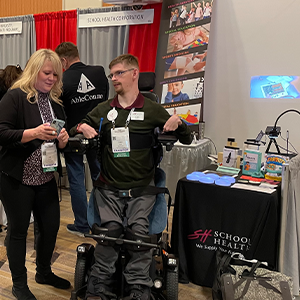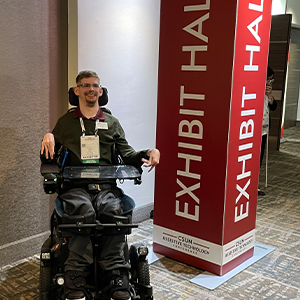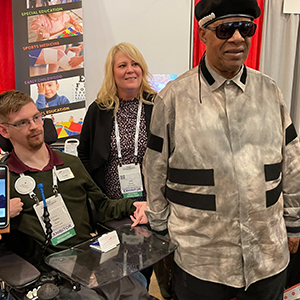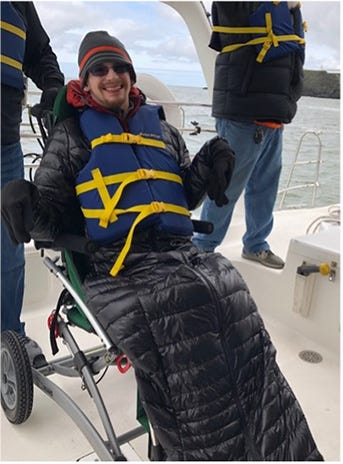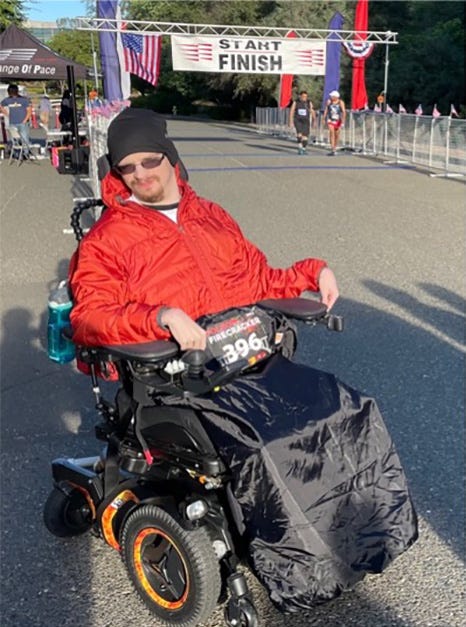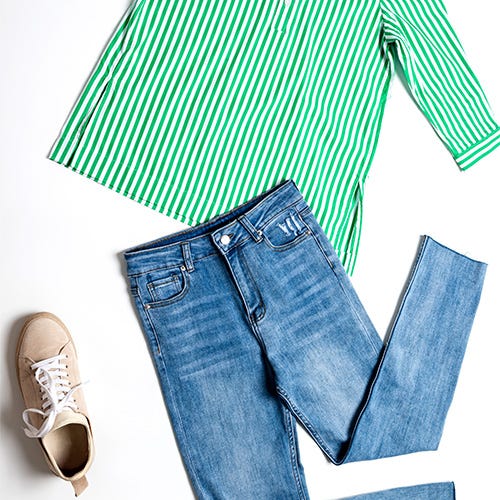Looking at Special Olympics as a Key to Community Involvement
- By Dr. Raymond Heipp
- Mar 20, 2024
- 0 Comments


Looking at Special Olympics as a Key to Community Involvement
By Dr. Ray Heipp
When many of us think of Special Olympics, we think of our individuals participating in games and finding success in their efforts. Special Olympics has evolved into so much more and is making a strong push to become part of the fabric in connecting the larger community to our individuals. I recently attended the “Sports for Inclusion Event” and saw various groups within the Special Olympics organization come together to expand their impact. Much of what they are doing can have an influence on what we do in our schools and therapy centers as well.
I first began volunteering with Special Olympics in the mid-1980s. It was great to see individuals receive an opportunity to demonstrate their abilities in more of the public eye. It was wonderful to observe the camaraderie between athletes and the support they gave each other. To me, the most amazing part came when I witnessed one of my athletes compete in the 100-meter dash. He was fantastic in training. When he competed in the finals, his time would have placed him in the top 6 at the high school level if he had the opportunity. The other volunteers were as amazed at his efforts as I was. The difference lay in the fact that I understood that he had the potential to do something like this. The others were not as aware and made comments like, “how can someone like him run so fast?” It would take another decade until the arrival of “Forrest Gump” where the public would have a wider sense of our individuals’ abilities.
One of the aspects discussed at the “Sports for Inclusion Event” was of the Unified School Program. Many of you may already be familiar with our Unified sports where our individuals are on teams with their neuro-typical peers and compete with other teams in sports like basketball and soccer. We are seeing more schools move toward this program which benefits everyone involved. I recently had an opportunity to work with one of the districts in my home state of Ohio as they put together this program for their students. The moderator of the program described how neuro-typical involvement increased dramatically once a few games had been played. The excitement generated by these games and the overall interactions with individuals who would not have had other opportunities was contagious. This story reminded me of the student with CP, whose use of a Zip Ball to play catch with the school’s varsity quarterback created a lasting relationship as well as changed the way others viewed the individual.
The “Sport for Inclusion Event” also brought in the idea of community support and activities. We definitely want to consider moving beyond a single day in the summer to provide games for individuals of all ages. Here are some “what ifs” to consider for your community:
- Can we create leagues for those outside of school ages to compete in things like basketball?
- Does your community have a wheelchair basketball league?
- Would one of your schools be open to hosting these leagues in their gyms?
- Can you have some of your students learn life skills by having them support the concession stands and ticket booths?
- If you are able to create these leagues, what about indoor soccer, so that those in wheelchairs can also be included?
- We have seen the rise of “Champion Leagues” for baseball, so what about expanding those into softball for all ages?
- Are there available fields and can we also encourage support from our communities for sponsorship?
- How about the inclusion of these teams in any kick-off parades?
Those sports, along with track and field, tend to be the ones that we think of for our individuals and Unified teams. Did you know that other sports are also at the heart of what Special Olympics does? How about some adapted bowling or bocce? The hottest sport which was discussed at the conference was Paddle Ball. Are there ways that we can get our individuals into other leagues? The beautiful thing is that Special Olympics already has kits designed for these sports to assist with the adaptations as well as getting the sponsors of these games a start on the equipment needed. What would it be like to have inclusive bocce or paddle ball tournaments as part of community days? There are so many opportunities to create events like these and I encourage you to reach out to me or to Special Olympics for other ideas!
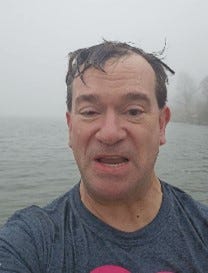

The picture you see here is just one of the ways you can get involved with Special Olympics. I annually partake in the Polar Plunge in support of Special Olympics. This picture shows this year’s plunge. I dove into Lake Erie on a day with slightly above freezing temperatures here in Ohio. School Health supports the Illinois chapter, but every state has its own version. I spoke with several individuals who did annual 24-hour plunges, where they dive once per hour for 24 straight hours. You could also simply sponsor someone instead of plunging yourself or volunteer for the formal events. Let’s now consider some other potential ways for you to become involved.
- Is your district interested in the Unified program and can they host events there on campus?
- Can the faculty and staff at your school compete against the Unified teams or even join with our individuals to take on other schools?
- Can businesses in the community step forward and offer support through sponsorships, volunteer hours, or even buying kits for various sports to support the growth of potential leagues?
Inclusion must take place within and beyond the walls of our schools! Special Olympics offers us an opportunity to take inclusion to our communities. Together, we can make the “tomorrow” of everyone a little better by allowing everyone to demonstrate their abilities. If you have any questions about how you can look to create this inclusion, please feel free to reach out to me at rheipp@schoolhealth.com!


